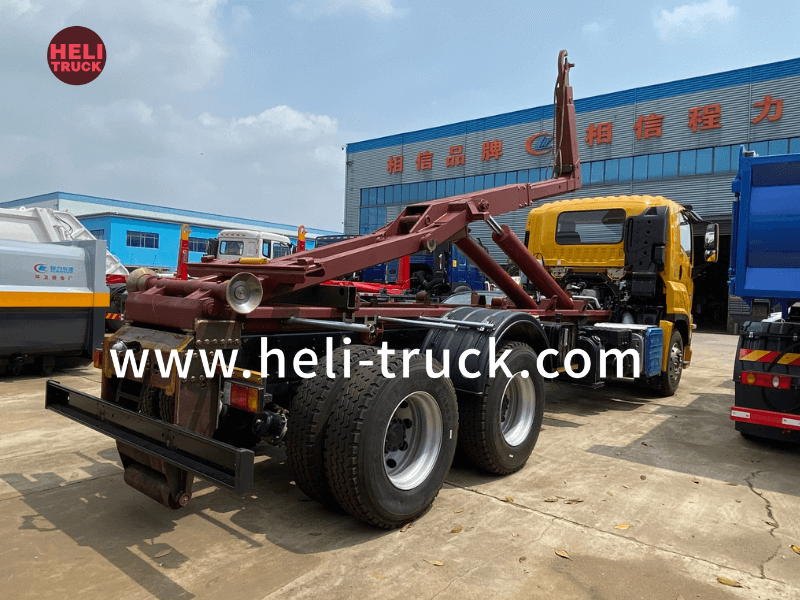Introduction
Waste management is a critical issue in today's world, with the increasing amount of waste being generated and the need to dispose of it safely and efficiently. Hazardous materials, in particular, pose a significant challenge due to their potential risk to human health and the environment. In this article, we will delve into the role of garbage compactor trucks in managing hazardous waste and explore their benefits, features, and best practices for effective disposal.
Chapter 1: Understanding Hazardous Waste
Hazardous waste is any material that poses a substantial threat to human health or the environment due to its chemical, physical, or biological properties. This type of waste requires special handling and disposal methods to prevent contamination and adverse effects. Common examples of hazardous waste include chemicals, solvents, batteries, and electronic devices.
Chapter 2: The Role of Garbage Compactor Trucks in Hazardous Waste Disposal
Garbage compactor trucks play a crucial role in managing hazardous waste by collecting, compacting, and transporting it to designated disposal facilities. These specialized vehicles are equipped with advanced features to ensure the safe and efficient handling of hazardous materials, reducing the risk of exposure and contamination during the collection and transportation process.
Chapter 3: Types of Garbage Compactor Trucks
There are several types of garbage compactor trucks designed for different waste management needs. Some of the most common types include:
1. Rear Loader Compactor Trucks: These trucks feature a rear-loading mechanism that allows waste collectors to dump the waste into the compactor from the back of the vehicle. This design is ideal for residential and commercial waste collection.
2. Front Loader Compactor Trucks: Front loader compactor trucks are equipped with a front-loading mechanism that enables waste collection from commercial and industrial sites. These trucks are commonly used for collecting large volumes of waste efficiently.
3. Side Loader Compactor Trucks: Side loader compactor trucks have a side-loading mechanism that allows waste collectors to pick up waste from curbside bins or containers. This design is suitable for narrow streets and areas with limited access.
Chapter 4: Features of Garbage Compactor Trucks for Hazardous Waste Disposal
Garbage compactor trucks designed for hazardous waste disposal are equipped with various features to ensure the safe and efficient handling of hazardous materials. Some of the key features include:
1. Sealed Compartments: Garbage compactor trucks have sealed compartments to prevent the leakage of hazardous materials during transportation, reducing the risk of exposure and contamination.
2. Leak Garbage Compactor Truck emissions standards : Advanced compactor trucks are equipped with leak detection systems that alert the operators to any leaks or spills, allowing them to take immediate action to prevent environmental damage.
3. Hazardous Waste Compatibility: Garbage compactor trucks are designed to handle specific types of hazardous waste, ensuring compatibility with the materials being collected and disposed of.
Chapter 5: Best Practices for Hazardous Waste Disposal Using Garbage Compactor Trucks

Effective hazardous waste disposal requires adherence to best practices to minimize risks and ensure compliance with regulations. Some best practices for hazardous waste disposal using garbage compactor trucks include:
1. Proper Segregation: Waste should be segregated at the source to separate hazardous materials from non-hazardous waste, ensuring safe handling and disposal.
2. Training and Certification: Operators of garbage compactor trucks should receive proper training and certification in hazardous waste handling to ensure they follow best practices and safety protocols.
3. Regular Maintenance: Garbage compactor trucks should undergo regular maintenance and inspection to ensure they are in optimal working condition and prevent breakdowns during waste collection and disposal.
Chapter 6: Environmental Benefits of Using Garbage Compactor Trucks for Hazardous Waste Disposal
The use of garbage compactor trucks for hazardous waste disposal offers several environmental benefits, including:
1. Reduced Pollution: Garbage compactor trucks help prevent pollution by safely collecting and transporting hazardous waste to designated disposal facilities, reducing the risk of contamination and environmental damage.
2. Energy Efficiency: Compactor trucks are designed to compact waste efficiently, reducing the volume of waste and the number of trips required for disposal, which saves fuel and reduces carbon emissions.
3. Compliance with Regulations: Garbage compactor trucks help ensure compliance with environmental regulations and standards for hazardous waste disposal, minimizing the risk of fines and penalties for non-compliance.
Conclusion
Garbage compactor trucks play a crucial role in managing hazardous waste by providing a safe and efficient means of collection and disposal. By understanding the features, types, and best practices associated with garbage compactor trucks, waste management professionals can effectively handle hazardous materials while minimizing risks to human health and the environment. Embracing the use of garbage compactor trucks for hazardous waste disposal is a step towards achieving sustainable waste management practices and promoting a cleaner, healthier environment for future generations.
